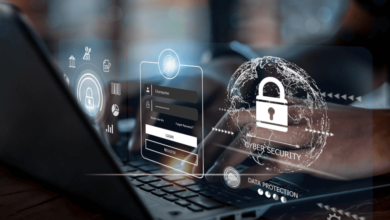Are You Maximizing Success by Navigating HubSpot Lifecycle Stages

Success in the world of digital marketing and sales depends critically on one’s ability to comprehend and use the stages of the customer lifecycle.
With the powerful tools HubSpot provides, companies can not only recognize these phases but also proactively move through them to achieve the best possible outcomes.
The importance of HubSpot Lifecycle Stages and how organizations can use them to propel development and accomplish their goals are examined in this article.
Understanding HubSpot Lifecycle Stages
According to HubSpot, lifecycle stages are the several stages that a lead or customer experiences when working with a company.
Usually, these phases consist of:
- Subscriber: Those who have chosen to receive communications from the company via email.
- Lead: Interested parties who have expressed interest in the company by interacting with content or supplying contact details.
- Marketing Qualified Lead (MQL): Leads that have been determined to have a higher likelihood of becoming customers due to certain factors, such as fit or engagement level.
- Sales Qualified Lead (SQL): Leads that have undergone additional screening by the sales team and are deemed suitable for direct sales interaction.
- Opportunity: Identified prospects actively sought a sale after being recognized as possible clients.
- Customer: People or companies who have done business with the company by purchasing or completing a transaction.
- Evangelist: Contented clientele who promote the company, encourage recommendations, and raise brand awareness.
Every phase signifies a unique degree of involvement and preparedness to advance in the sales funnel.
The Importance of Stage Navigation in the Lifecycle
Segmentation and targeting
Organizations may adjust their marketing and sales strategies to each group’s unique requirements and preferences by precisely classifying leads and customers into the relevant lifecycle stages. Conversion rates and engagement are increased by this focused strategy.
Personalized Communication
Businesses may send out pertinent and tailored communications by knowing where customers are in the buyer’s journey. Tailored communication builds deeper relationships and brand loyalty, whether it’s for existing consumers or prospects who are being nurtured with instructional material.
Management of Sales Pipelines
HubSpot Lifecycle Stages make it easier to manage your sales funnel by making it clear how leads and opportunities are progressing. Based on each prospect’s lifecycle stage, sales teams may focus their efforts on those who have the best chance of converting.
Leveraging HubSpot Lifecycle Stages for Success
Lead Scoring and Qualification
Use engagement data and behaviors related to each step of the lifecycle to inform your lead scoring criteria. This enables companies to determine which leads have the highest potential and to order their follow-up actions accordingly.
See Also Discover Your Perfect Match Among Horseback Riding Styles
Automated Workflows
To expedite marketing and sales procedures, establish automated workflows that are triggered by modifications in lifecycle phases. For instance, send out a series of focused emails to leads who switch from MQL to SQL, or give a salesperson a follow-up assignment.
Progressive Profiling
As leads and consumers go through various lifecycle phases, continuously compile pertinent data about them. At every touchpoint, progressive profiling facilitates more individualized interactions and aids in segmentation refinement.
Key Metrics to Monitor
- Conversion Rates: To gauge how well your marketing and sales activities are guiding prospects through the funnel, keep track of the proportion of leads that go from one stage of the lifecycle to the next.
- Velocity: Calculate how long it typically takes leads to move through each step. Velocity monitoring shows you how effective your sales process is and points out any possible bottlenecks that require attention.
- Customer Lifetime Worth (CLV): To determine a customer’s long-term worth to the company, examine their CLV at various phases of their lifespan. Strategies for client retention and resource allocation are informed by this understanding.
- Engagement Metrics: Track data from email opens, click-through rates, and content engagement to determine how well your marketing and communication tactics are working at each step of the customer lifecycle.
Conclusion
Managing the HubSpot Lifecycle Stages effectively is essential to achieving the best possible results in digital marketing and sales.
Businesses may increase engagement, conversion, and customer retention by segmenting leads and customers, providing tailored communication, and streamlining procedures.
Key performance indicators should be regularly monitored to facilitate continuous strategy improvement and guarantee alignment with overall corporate goals.
Businesses can realize their full potential and achieve sustainable growth in today’s competitive marketplace by embracing the power of HubSpot Lifecycle Stages.



